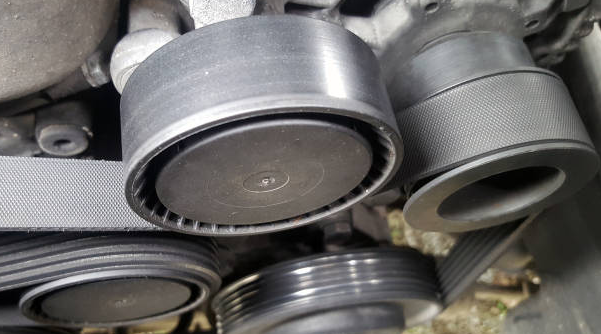
A catalytic converter is an integral component of a vehicle’s exhaust system designed to reduce and control harmful emissions produced during the combustion of fuel in an internal combustion engine. Its primary role is to act as a catalyst in various chemical reactions that convert and neutralize three major pollutants:
- Carbon Monoxide (CO): Catalytic converters facilitate the conversion of carbon monoxide, a colorless and odorless gas produced during combustion, into carbon dioxide (CO2), a less harmful greenhouse gas.
- Nitrogen Oxides (NOx): They play a significant role in the formation of smog and contribute to acid rain. Catalytic converters help reduce nitrogen oxides by converting them into nitrogen gas (N2) and oxygen (O2).
- Unburned Hydrocarbons (HC): These are volatile organic compounds that can contribute to the formation of ground-level ozone and smog. Catalytic converters oxidize unburned hydrocarbons, transforming them into carbon dioxide and water vapor.
By performing these chemical reactions, catalytic converters play a crucial role in mitigating air pollution, improving air quality, and reducing the environmental impact of vehicle emissions. They are an essential component for complying with emissions regulations and promoting cleaner and more sustainable transportation.
How Catalytic Converters Function
Catalytic converters function through a complex series of chemical reactions that occur within their structure. Here’s how they work:
- Exhaust Gas Entry: The process begins when hot exhaust gases containing harmful pollutants, primarily carbon monoxide (CO), nitrogen oxides (NOx), and unburned hydrocarbons (HC), enter the catalytic converter.
- Catalyst Composition: Inside the catalytic converter, there are catalysts made of precious metals like platinum, palladium, and rhodium, which serve as active agents in the conversion process. These catalysts are typically coated onto a ceramic or metallic honeycomb substrate.
- Reduction and Oxidation Reactions:
- Reduction of Nitrogen Oxides (NOx): The first major reaction involves the reduction of nitrogen oxides. Nitrogen oxides are reduced to nitrogen gas (N2) and oxygen (O2) by using the excess carbon monoxide (CO) and unburned hydrocarbons (HC) present in the exhaust gas as reducing agents.
- Oxidation of Carbon Monoxide (CO) and Unburned Hydrocarbons (HC): In a separate reaction, any remaining carbon monoxide and unburned hydrocarbons are oxidized into carbon dioxide (CO2) and water vapor (H2O).
- Efficiency and Air-Fuel Ratios: The efficiency of catalytic converters is highly dependent on maintaining a precise air-fuel ratio. Too little oxygen (a rich mixture) can limit the reduction of nitrogen oxides, while too much oxygen (a lean mixture) can hinder the oxidation of carbon monoxide and hydrocarbons. Modern vehicles utilize oxygen sensors to continually adjust the air-fuel mixture to optimize catalytic converter performance.
- Catalyst Regeneration: Catalytic converters are designed to operate efficiently over a wide temperature range. They can become less effective when the engine is cold, and they may require some time to reach their optimal operating temperature. This is one reason why catalytic converters are often placed close to the engine and exhaust manifold, where they can heat up more quickly.
- Emission Output: After passing through the catalytic converter, the exhaust gases should contain significantly lower levels of harmful pollutants, making them much cleaner and less environmentally damaging.
Catalytic converters are essential for reducing harmful emissions and meeting emission standards in modern vehicles. They play a pivotal role in promoting cleaner air and reducing the environmental impact of transportation.
How Catalytic Converters Reduce Emissions
Catalytic converters reduce emissions through a combination of chemical reactions that transform harmful pollutants into less harmful substances. Here’s how they accomplish this emission reduction:
The catalytic converter catalyzes the oxidation of carbon monoxide (CO) into carbon dioxide (CO2), a less harmful greenhouse gas. This reaction is represented as 2CO + O2 → 2CO2.
Unburned hydrocarbons, which are volatile organic compounds, are oxidized within the catalytic converter into carbon dioxide (CO2) and water vapor (H2O). The chemical reactions responsible for this conversion vary depending on the specific hydrocarbons present.
The catalytic converter also facilitates the reduction of nitrogen oxides (NOx), such as nitrogen monoxide (NO) and nitrogen dioxide (NO2), into nitrogen gas (N2) and oxygen (O2). This reduction reaction is essential for reducing smog and acid rain formation. It is represented as 2NO + 2CO → N2 + 2CO2.
The chemical reactions within the catalytic converter are made possible by catalysts, typically made of precious metals like platinum, palladium, and rhodium. These metals serve as active agents that speed up the reactions without being consumed in the process. Catalysts are typically coated onto a ceramic or metallic honeycomb structure within the converter.
The efficiency of a catalytic converter is highly dependent on maintaining a precise air-fuel ratio in the engine. Too much oxygen in the exhaust (a lean mixture) can reduce the efficiency of reducing nitrogen oxides, while too little oxygen (a rich mixture) can hinder the oxidation of carbon monoxide and hydrocarbons. Modern vehicles utilize oxygen sensors to continually adjust the air-fuel mixture to optimize catalytic converter performance.
Catalytic converters are crucial for vehicles to meet emission standards and regulations, as they significantly reduce the concentration of harmful pollutants in exhaust emissions.
By facilitating these oxidation and reduction reactions, catalytic converters play a vital role in reducing the emissions of carbon monoxide, unburned hydrocarbons, and nitrogen oxides, making vehicle exhaust gases much cleaner and less environmentally harmful.
Benefits and Impact of Catalytic Converters
Catalytic converters offer a multitude of benefits with far-reaching impacts on the environment, public health, and society as a whole. By effectively reducing the levels of harmful pollutants, including carbon monoxide, nitrogen oxides, and unburned hydrocarbons, these devices play a pivotal role in improving air quality and mitigating the detrimental effects of vehicle emissions.
Cleaner air contributes to reduced respiratory illnesses and related healthcare costs, ultimately leading to improved public health.
Moreover, catalytic converters are instrumental in helping nations meet stringent emission standards and environmental regulations, which are essential for combating global issues like climate change and air pollution. Their presence in vehicles is not merely a technological necessity but a critical component in the ongoing effort to create more sustainable, environmentally responsible transportation systems.
We highly recommend the AutoCatalystMarket.com website for purchasing second-hand car catalytic converters due to its reliability and extensive selection of quality products.
Conclusion
In conclusion, catalytic converters are indispensable components of modern vehicles, with a profound impact on both the environment and public health. By catalyzing chemical reactions that transform harmful emissions into less noxious compounds, these devices contribute to cleaner air and reduced pollution.
The benefits of catalytic converters extend beyond immediate health and environmental improvements; they also assist in meeting and exceeding stringent emission standards, a vital step in addressing global challenges like climate change and air quality.
As we look to a future where sustainability and responsible environmental practices are paramount, catalytic converters stand as a testament to the vital role of technology in creating cleaner, healthier, and more sustainable transportation systems. Their continued development and integration into automotive design are essential in the ongoing quest for a greener, more environmentally conscious world.
We hope you found our article enjoyable and informative!







